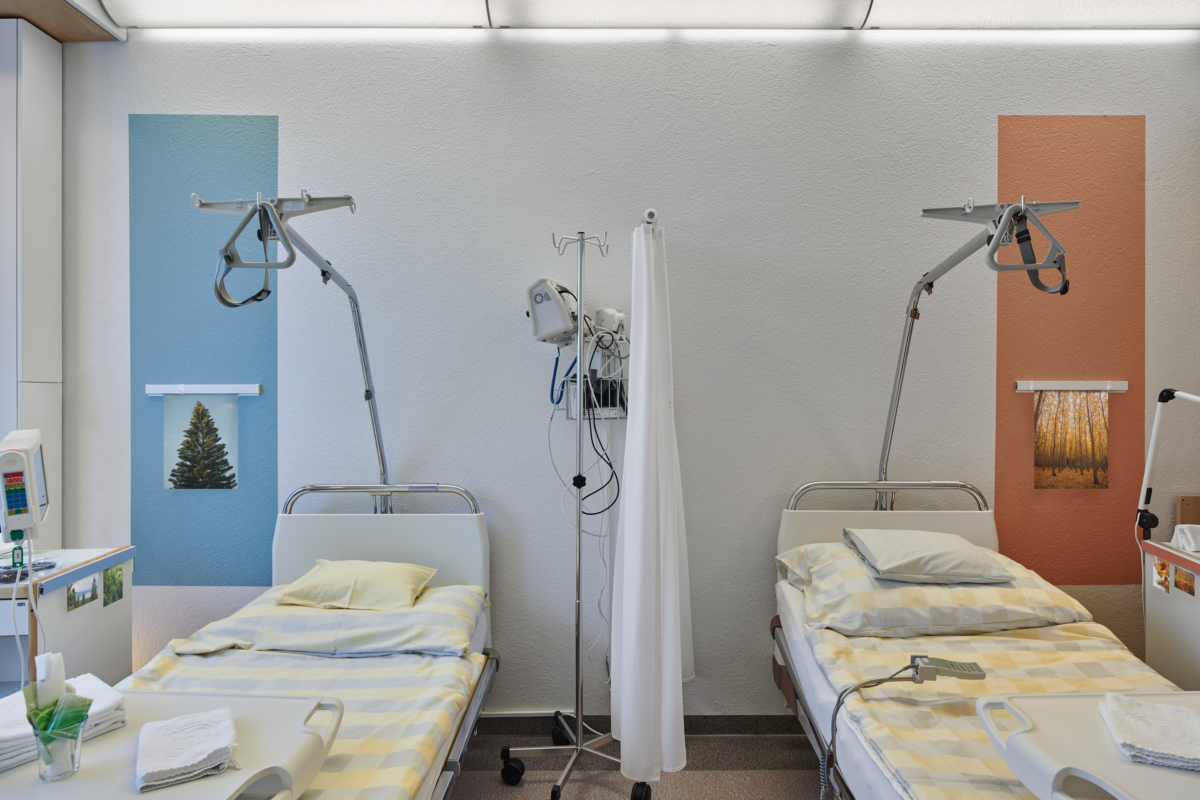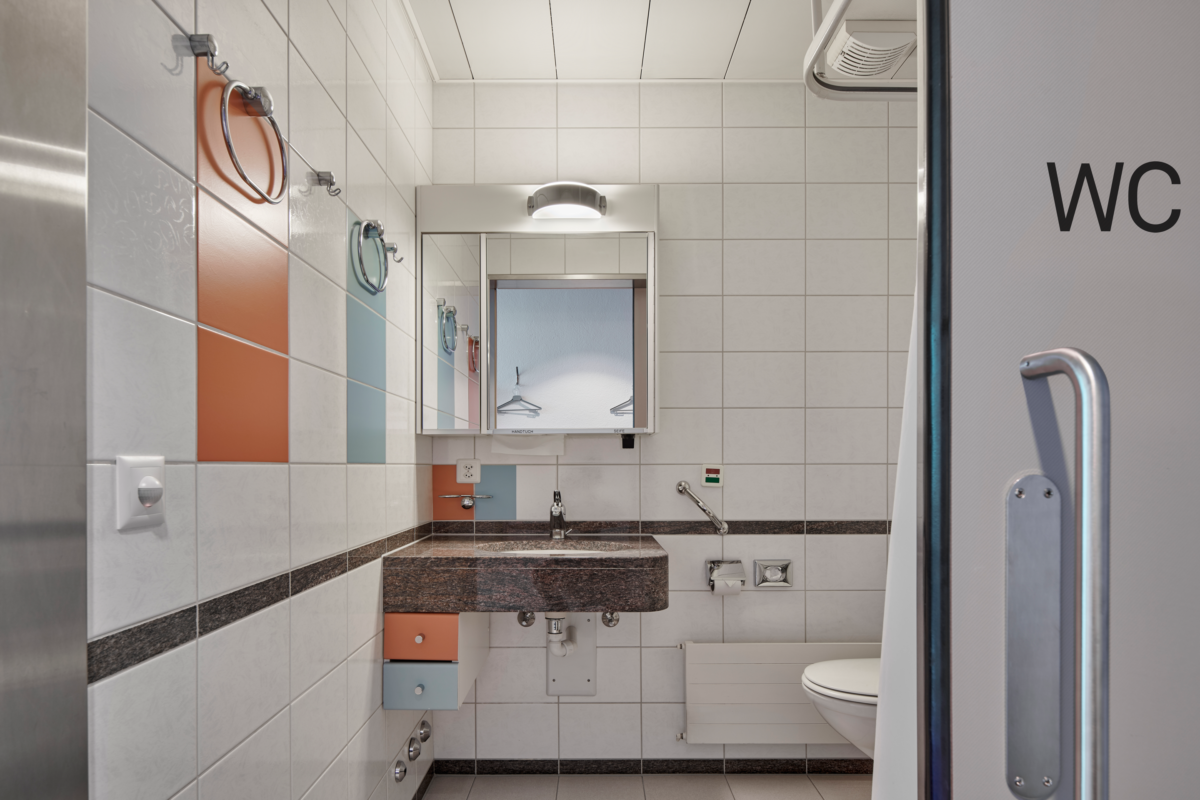



Age-appropriate spatial design at Lindenhofspital
Lindenhofspital is increasingly caring for older patients who are suffering from dementia. How should the spatial environment be designed so that this group of patients can orientate themselves better?
Starting position
With an increasingly ageing society, the number of physically and cognitively impaired people who are cared for in acute hospitals is also rising. This is also the case at Lindenhofspital, where the number of patients suffering from dementia has grown in recent years. The design of the spatial hospital environment plays an essential role in ensuring patient-friendly care for those affected, because it can contribute to their safety, orientation and well being.
Procedure
The spatial environment of a ward was assessed by an interdisciplinary team of experts from the Health Care Communication Design HCCD working group at the Bern University of Applied Sciences. within the framework of an on-site inspection. The existing spatial situation was analysed against the background of empirical findings from the field of health care design and evaluated with recommendations. The Bernese design agency komform, a founding shareholder of the SCDH like the Bern University of Applied Sciences, provided a further basis as a practical partner. An image analysis of the premises was carried out by komform by simulating presbyopia with a filter. In a second step, komform planned design interventions for a model twin-bedded room based on the analyses and recommendations, with a focus on the most cost-effective implementation possible. The interventions were implemented by, among others, a painter and an advertising technician, and finally evaluated by the HCCD working group.
Results
The consideration of evidence-based design in the design of patient rooms has contributed to helping cognitively and physically impaired older patients to orientate themselves better spatially. Feedback on the design of the room was predominantly positive – both from employees as well as relatives and patients. This indicates that evidence-based design also has a positive influence on the well being of the different user groups.
Health Care Communication Design HCCD working group
Project team
Minou Afzali, BFH-HKB, Institute of Design Research (project leader)
Sabine Hahn, BFH-G, Nursing care
Elke Reitmayer, BFH-AHB, FDW
Praxispartnerin komform
Rachel Imboden
Patrick Probst
